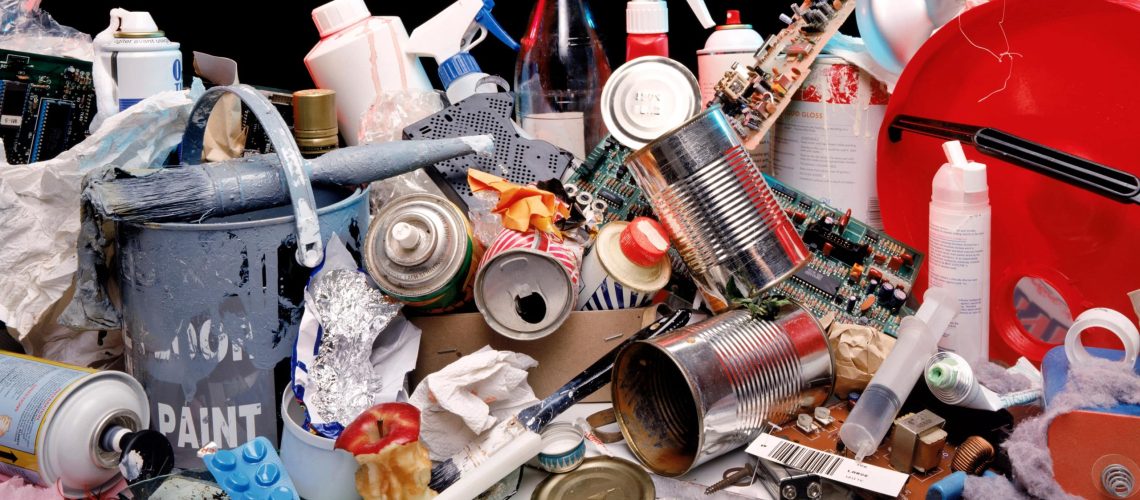There will be significant changes in the future about waste generation in Australia because of the increased population density and changing consumer habits. Businesses and households would be curious about the figures for 2025.
Such as transitioning into a new practised waste management policy or through regulations and operations with environmental sustainability initiatives.
As Australia’s waste problem grows, what will it look like in 2025? Read the latest statistics, trends, and forecasts about the future of waste management.
Key Australian Waste Statistics to Watch for 2025
Lately, Australia has faced several serious challenges regarding waste generation and management for 2020-21.
About 75.8 million tonnes of waste was generated, and about 2.95 tonnes of garbage were calculated per person. A disturbing trend is noted herein that waste generation has, over 15 years, increased by approximately 20%, whereas the population increased by 25% and GDP by 38%.
Overview of Waste Generation in Australia
Some of the most strategic sectors that will witness a rise in waste generation include Household Waste Generation- In 2020-21, Households created approximately 14 million tonnes, which lightens the weightage of that total waste impact of the country.
Commercial Waste Generation: The 3% increase in waste produced per capita in this sector since 2017 is against the national objective of reducing the total per capita by 10% by 2030.
Construction Waste Generation: The industry generates nearly three metric tonnes of waste per person, and projections suggest an imminent increase that attains historical patterns.
E-Waste Generation: Recent projections estimate that individual e-waste production will rise by about 28 to 29 kilograms by 2030, leading to a national total of 657,000 tonnes.
Significant Growth Areas
Food waste: Australians throw away at least 7.6 million tons of food annually through the supply chain. That’s more than 312 kilograms per person, translating into an average annual cost of up to $2,500 for every household.
E-waste: Driven by new technologies and changing consumer preferences, it will rise to 657,000 tonnes by 2030.
Plastic Waste: According to Clean Up Australia, the country generates approximately 2.5 million tonnes of plastic waste annually, about 100 kg per person.
Future Waste Projections for 2025
According to research undertaken in Australia, plastic consumption is predicted to cross more than 200% by 2050. The government promotes a circular economy, and to date, 60% of the plastic waste produced in the country has been successfully diverted from landfills.
Based on recent polls, 96% of Australians underwent sustainable practices in the past three months. It includes composting organic waste, recycling materials, and avoiding unnecessary purchases.
The Impact of Australian Waste Trends on Businesses and Households
For the past 15 years, waste generation grew by 20%. At least 75.6 million tonnes have been produced from 2022 to 2023. It comprised of household, e-waste, construction, and commercial waste.
Waste Generation by Sector
Several sectors form Australia’s waste generation patterns. It includes household consumption, certain industries, and commercial enterprises. This report describes each category’s relevant waste generation trends based on the latest available data.
Residential Sector Waste
Around 45% of plastic waste was generated by households, and less than 60% was organic food waste. Household waste generation has been escalating because of changing consumption patterns, and urbanisation has continued to exert pressure on the increase.
Industry-Specific Waste
Different industries in Australia contribute other volumes to the absolute waste amounts. In 2020-21, a variety of sectors that contributed substantially to waste production include:
Manufacturing: This industry has been responsible for waste generation in volume measuring 12.8 million tonnes, representing around 16.9% of total waste. Manufacturing waste generation increased by 14% from cumulative production levels in the industry from 2016 to 2017.
Construction: In this sector, 12.7 million tonnes of waste were generated, 22% more than before, due to a boom in construction across Australia.
E-waste: In 2021, approximately 539,000 tonnes of e-waste were produced in Australia, with the household sector accounting for around 40%.
Business Type Waste
Australia is among the highest-producing nations in terms of industrial waste. Between 2021 and 2022, the country generated approximately 32.8 million tonnes, equivalent to the country’s 43% total waste.
How Households Can Prepare for 2025 Waste Trends
Here’s how households can prepare for waste trends to manage waste generation better and increase recycling activities:
Reduce Single-Use Plastics: To minimise plastic usage, every household must use reusable bags, containers, and bottles.
Efficient Recycling Practices: Familiarise yourself with local recycling guidelines, sort recyclable materials, and prevent contamination.
Compost Organic Waste: This is one of the cheapest and easiest ways to reduce waste in landfills. Besides, it’s environmentally friendly, serving as a natural plant fertiliser.
Smart Purchasing: Bulk-buying is recommended, and choose those made from recycled materials, such as wood, paper, and cardboard.
Repair, Repurpose or Donate: Don’t discard all unwanted items because some can be repaired, repurposed, or donated.
Waste Management Costs and Compliance
Waste management expenses and compliance regulations burden ordinary households and businesses nationwide. As waste management increases due to landfill fees and other operational difficulties, there is an important realisation that sustainability practices must be prioritised.
Applying innovative technologies to future generations not only conforms to regulations but also alleviates the financial burden.
The Role of Recycling in Reducing Future Waste
Most countries worldwide have increased the amount of waste produced, which calls for highly advanced recycling techniques towards sustainability and environmental modelling. Importance of Recycling in Australia
Recycling rates have generally improved in all Australian states and territories over the past few years. The recycling rate increased by nearly 57 per cent during the last 15-year timeframe and reached 60% between 2020 and 2021.
Government Initiatives and Recycling Trends
Government initiatives extended into the Australian waste strengthening space beyond recycling would feature a commitment to sustainable waste management practices.
Reduction in Landfill Waste: Such enhanced recycling systems can push waste diversion from landfills, thus greatly affecting the environment.
National Waste Policy Action Plan: This initiative, launched in 2019, includes reducing per capita waste generation by 10% by 2030 and achieving an average recovery rate of 80% across all waste streams simultaneously by that year.
With an incineration capacity of up to 460 kilotonnes yearly, it could produce energy for around 58,000 households. It also indicates below 460,000 tonnes of CO2 emissions yearly through more efficient means.
Gasification: All common fuels can go through a high-temperature route with organic or fossil-based feedstocks to be converted into carbon monoxide, hydrogen, and carbon dioxide.
Waste-to-Energy Initiatives
Australia’s move to waste-to-energy technologies marked a major shift in waste management toward more sustainable methods. Many of these technologies are targeted toward projects in development that will reduce landfills, improve recovery, and provide energy as part of the waste management framework.
Incineration: This waste incineration will be able to take care of a total of 460,000 kilo-tonnes of waste in a given year and provide energy to approximately 58,000 households. In addition, it would reduce more than 460,000 tonnes of CO2 emissions annually with a very high efficiency.
Gasification: Even traditional fuels could be subjected to these high-temperature processing methods that chemically convert organic or fossil-derived materials into carbon monoxide, hydrogen, and carbon dioxide.
Anaerobic Digestion: This biological process decomposes organic materials to generate biogas, which can be used as an energy source.
The Growing Problem of Plastic and E-Waste in Australia
Australia faces one of the heaviest challenges from plastic and electronic waste (e-waste), whose issues grow continuously as consumption increases, and there is no proper recycling opportunity.
Plastic Waste in Australia
Plastic waste rapidly increases in Australia, reportedly around 3.5 million metric tonnes yearly. Of this, only around 18% of plastic packaging is recycled, falling well short of the target of 70% by 2025.
The mismanagement of plastics is an environmental nuisance that contributes significantly to both marine debris and land pollution, which could adversely affect wild animals and ecosystems.
After all, the government collaborates with various stakeholders to introduce strategies for improving recycling practices, empowering public participation, and developing regulatory frameworks.
E-Waste Trends and Challenges
E-waste is the fastest-growing waste stream in Australia: 511,000 tonnes produced in 2019 is expected to climb further to 657,000 tonnes by 2030. The National Television and Computer Recycling Scheme encourages manufacturers to be responsible for managing their products after their use.
What You Can Do: Actionable Tips for Waste Reduction and Disposal
Indeed, waste reduction is very important for pursuing sustainability at home and in offices.
Waste Reduction at Home and in the Workplace
Residential and professional environments can minimise waste through a series of dedicated actions. Households and businesses can reduce waste by using reusable products, practising conscientious consumption, and advocating for recycling programs.
Disposal Services to Help Reduce Waste
Such services are essential not just for convenience but also for economic value and make a great contribution to sustainability. They include business and household cost savings, regulatory compliance, and support for environmentally sound waste management practices.
Aus Rubbish Removals Sydney offers trustworthy and affordable rubbish removal throughout Sydney, with a range of void disposal customised to suit an individual’s specific requirements. Be it a household, office, or construction waste, rely on us for prompt, same-day removals made responsible to the environment.
Call us at 0402 244 036 and book your rubbish removal. We have prioritised our eco-friendly disposal activities while offering competitively priced service and perfecting waste management solutions.
Frequently Asked Questions
1. What is the biggest waste issue facing Australia today?
Every year, Australia faces challenges with plastic waste, estimated to range from about 3.5 million to over 7.6 million tonnes of food waste produced in the country. It accounts for over 3.5 million tonnes of plastics.
2. What is Australia’s recycling rate?
In the past fifteen years, Australia’s national recycling system has seen an impressive 57% increase in recycling rates.
3. How can I reduce my household waste in 2025?
Household waste reduction in 2025 can be attained by changing consumption patterns, decreasing food wastage, using reusable items appropriately, learning proper disposal techniques, and community efforts.
4. What are the best ways to manage e-waste?
Efficient handling of electronic waste includes recycling, refurbishment, safe disposal, attachment of the community, and a much more effective policy advocacy.
5. What happens to waste after Aus Rubbish Removal collects it?
After the rubbish is gathered, we transport the materials to the recycling facility for sorting, processing, and disposal in the most responsible manner.



